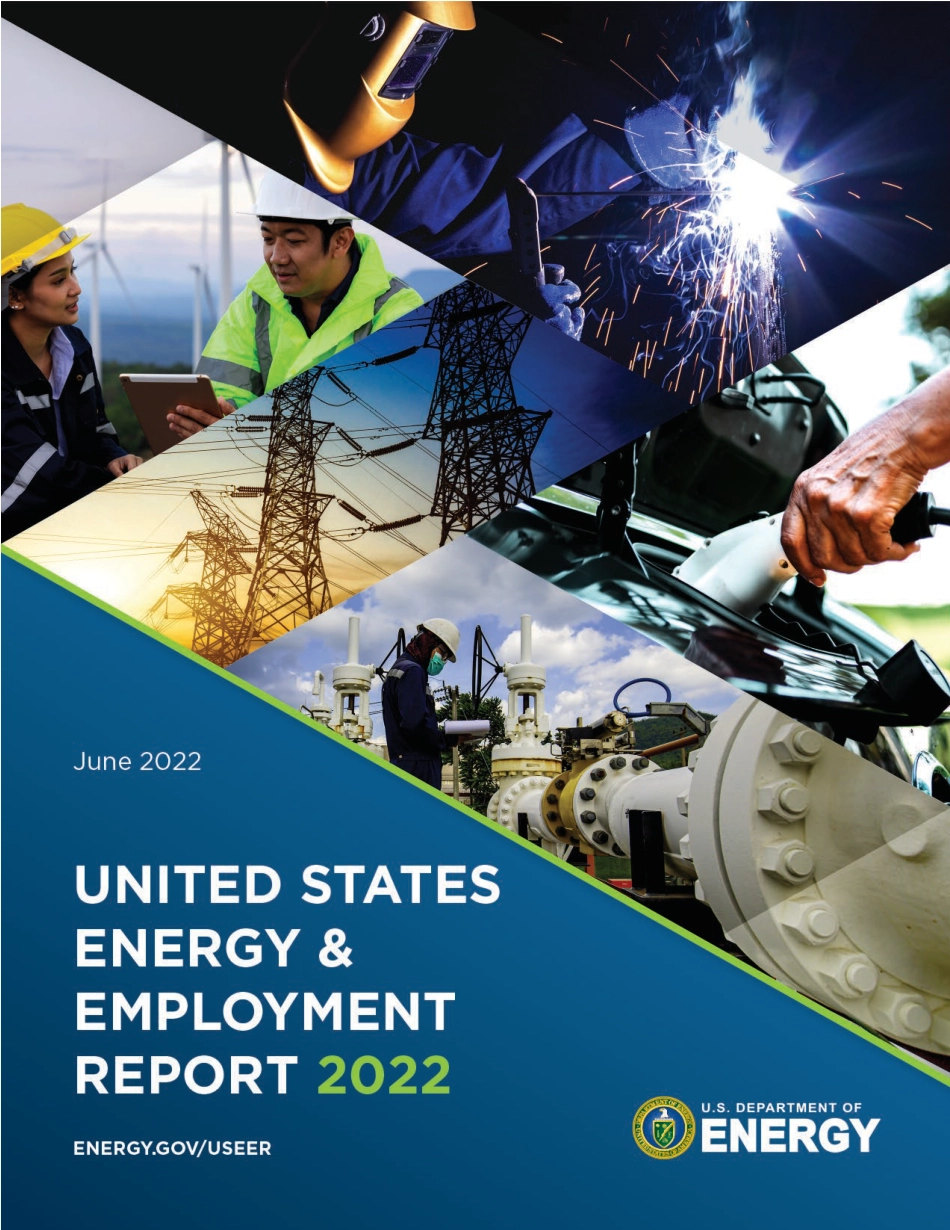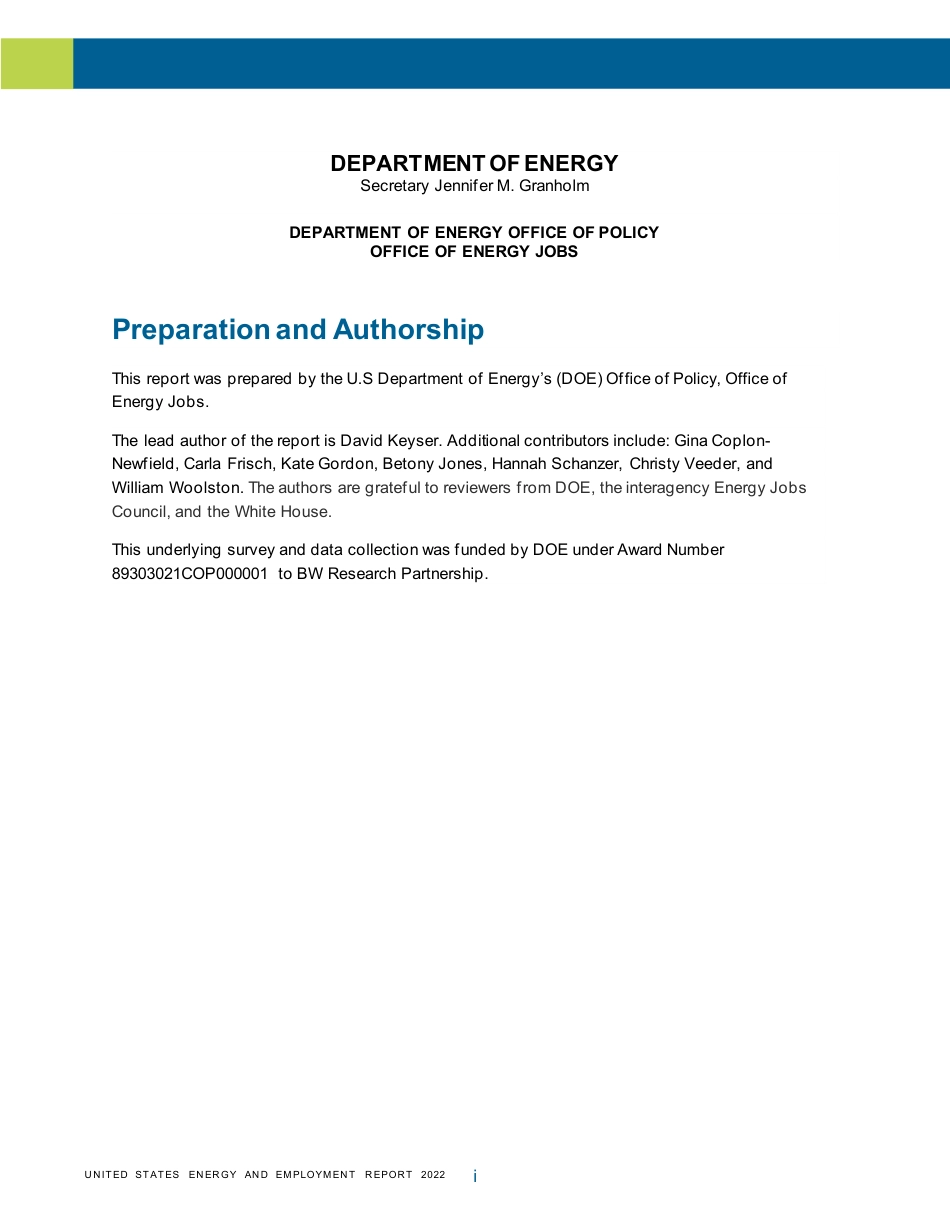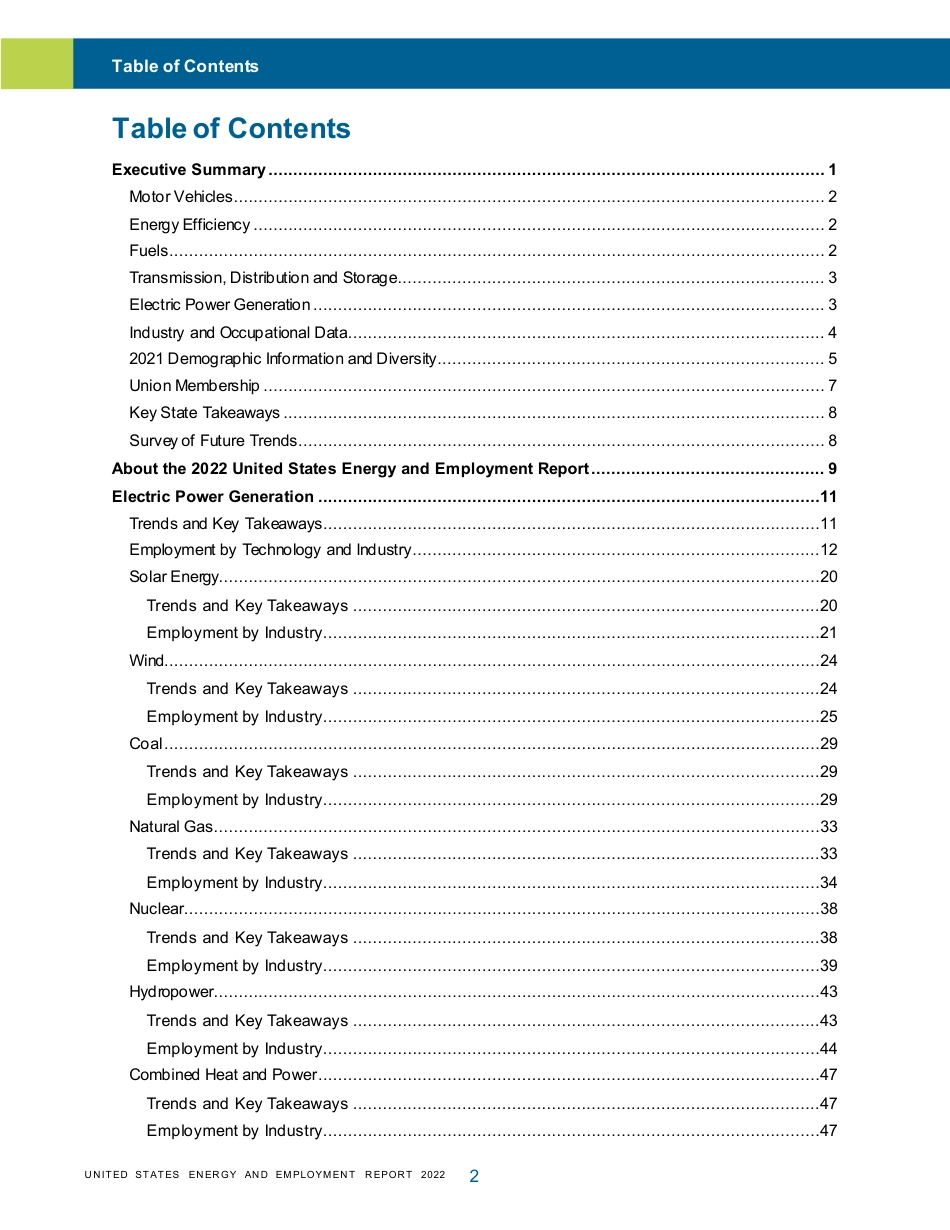i U N ITED STATES EN ER GY AN D EM PLOYM EN T R EPOR T 2022 DEPARTMENT OF ENERGY Secretary Jennifer M. Granholm DEPARTMENT OF ENERGY OFFICE OF POLICY OFFICE OF ENERGY JOBS Preparation and Authorship This report was prepared by the U.S Department of Energy’s (DOE) Office of Policy, Office of Energy Jobs. The lead author of the report is David Keyser. Additional contributors include: Gina Coplon-Newfield, Carla Frisch, Kate Gordon, Betony Jones, Hannah Schanzer, Christy Veeder, and William Woolston. The authors are grateful to reviewers from DOE, the interagency Energy Jobs Council, and the White House. This underlying survey and data collection was funded by DOE under Award Number 89303021COP000001 to BW Research Partnership.Table of Contents 2 U N ITED STATES EN ER GY AN D EM PLOYM EN T R EPOR T 2022 Table of ContentsExecutive Summary ................................................................................................................ 1 Motor Vehicles ....................................................................................................................... 2 Energy Efficiency ................................................................................................................... 2 Fuels .................................................................................................................................... 2 Transmission, Distribution and Storage ...................................................................................... 3 Electric Power Generation ....................................................................................................... 3 Industry and Occupational Data ................................................................................................ 4 2021 Demographic Information and Diversity .............



